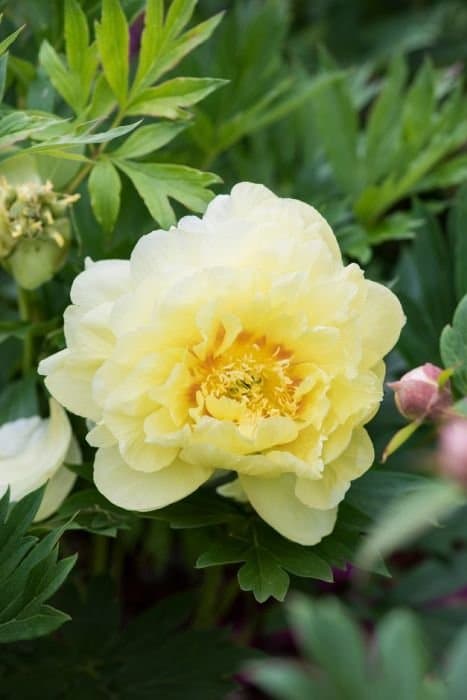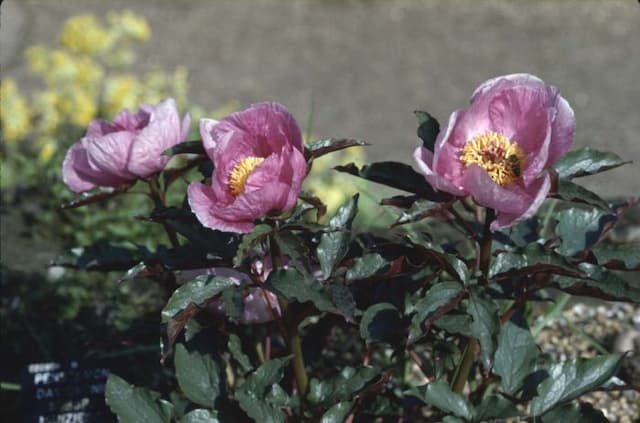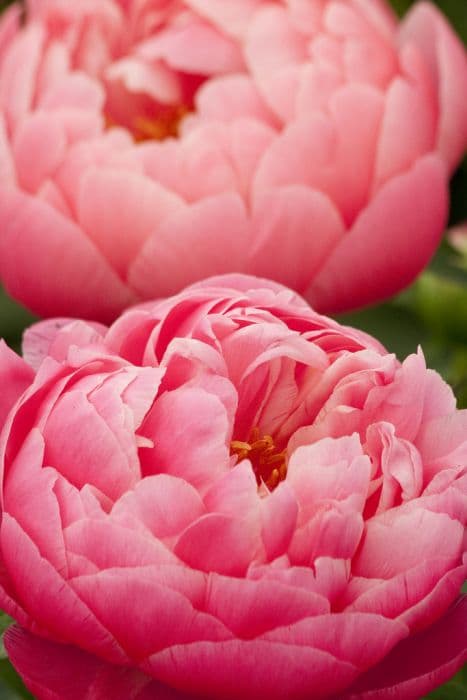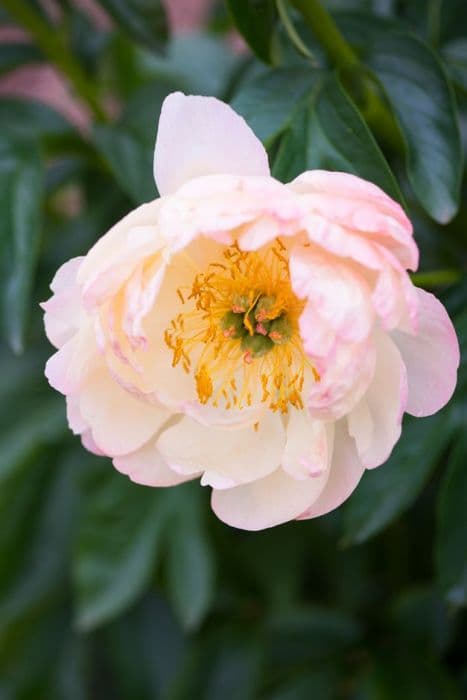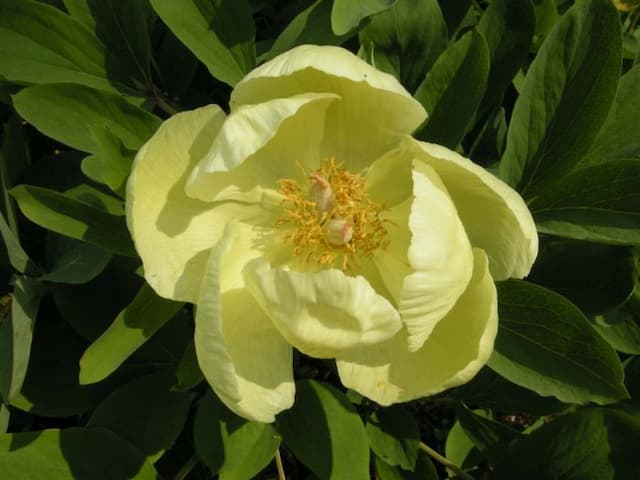Peony 'Sarah Bernhardt' Paeonia lactiflora 'Sarah Bernhardt'
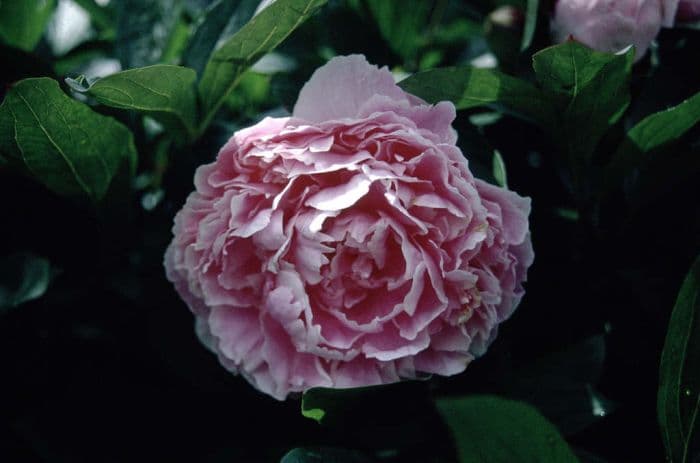
ABOUT
'Sarah Bernhardt' is an herbaceous perennial to 90cm with divided foliage, erect stems bearing fragrant, rose-pink double flowers 20cm in width, with ruffled inner petals
About this plant
 Names
NamesFamily
Paeoniaceae.
Synonyms
Chinese Peony, White Peony, Common Garden Peony.
Common names
Paeonia lactiflora 'Sarah Bernhardt'
 Characteristics
CharacteristicsLife cycle
Perennials
Foliage type
Deciduous
Color of leaves
Green
Flower color
Pink
Height
2-3 feet [60-90 cm]
Spread
2-3 feet [60-90 cm]
Plant type
Herb
Hardiness zones
3-8
Native area
Asia
Benefits
 General Benefits
General Benefits- Aesthetic Appeal: The plant features large, double-flowered blooms that are a soft pink color, adding beauty to gardens and landscapes.
- Fragrance: Peony 'Sarah Bernhardt' has a pleasant fragrance, which can enhance the sensory experience of a garden.
- Longevity in Gardens: Peonies are long-lived perennials, often thriving for decades once established.
- Cut Flowers: The blooms are excellent for cutting and arranging in bouquets, lasting well in vases.
- Seasonal Interest: They bloom in late spring to early summer, providing seasonal interest in the garden when many early spring flowers have faded.
- Attract Pollinators: Peonies attract bees and other beneficial pollinators to the garden, which is essential for the health of many plants.
- Low Maintenance: Once established, they require minimal care beyond occasional watering and deadheading.
- Cold Hardy: Peonies are very hardy and can withstand cold winter temperatures, making them suitable for a range of climates.
- Drought Resistance: They are relatively drought-tolerant, making them a good choice for gardens with less available water.
 Medical Properties
Medical Properties- Anti-inflammatory effects: Compounds within Paeonia lactiflora, like paeoniflorin, have been shown to have anti-inflammatory properties, which could potentially be used for treating arthritis and other inflammatory conditions.
- Analgesic properties: The plant may have pain-relieving properties, making it a possible treatment for alleviating discomfort from various ailments.
- Immunomodulatory effects: Some research indicates that Paeonia lactiflora can modulate the immune system, potentially helping with autoimmune diseases.
- Antispasmodic benefits: The natural compounds in this plant may help in reducing muscle spasms or cramps.
 Air-purifying Qualities
Air-purifying QualitiesThis plant is not specifically known for air purifying qualities.
 Other Uses
Other Uses- Potpourri Ingredient: Petals of the Peony 'Sarah Bernhardt' can be dried and added to potpourri for a subtle, sweet fragrance.
- Craft Projects: Dried peony petals and blooms can be utilized in creating homemade soaps, candles, or even natural dyes for fabrics.
- Wedding Decor: The lush, full blooms of the 'Sarah Bernhardt' peony make them a favored choice for wedding bouquets, centerpieces, and venue decorations.
- Garden Companion Planting: Peonies can be planted alongside other perennials to help support beneficial insect populations and create a balanced garden ecosystem.
- Culinary Garnish: Fresh peony petals, free of pesticides, can be used to decorate cakes and desserts for an elegant touch.
- Floating Decorations: The blooms of the 'Sarah Bernhardt' peony can float in bowls of water to create a simple and elegant table decoration.
- Photography Prop: The attractive flowers of the peony make them excellent subjects or props for photography, particularly in spring-themed shoots.
- Pressed Flower Art: Peony petals and leaves can be pressed and used to create beautiful artwork or decorative items such as bookmarks or framed pieces.
- Floral Confetti: Biodegradable and more environmentally friendly than traditional confetti, peony petals can be tossed at celebrations like weddings or parties.
- Scented Sachets: Dry peony petals and sequester them in fabric sachets to create natural, fragrant drawers and closet fresheners.
Interesting Facts
 Feng Shui
Feng ShuiThe Peony is often used in Feng Shui to promote romance and prosperity. In Feng Shui, Peonies are placed in the southwest corner of a garden or home to boost love and marriage prospects. Being a symbol of wealth, they can also be positioned in the wealth area of the home or business. However, care must be taken not to place them in bedrooms, as they are believed to invoke excessive yang energy, which can be overwhelming.
 Zodiac Sign Compitability
Zodiac Sign CompitabilityThe Peony is not used in astrology practice.
 Plant Symbolism
Plant Symbolism- Prosperity: Peonies like the 'Sarah Bernhardt' are often associated with wealth and good fortune, making them a popular choice in celebrations that wish for prosperity.
- Romance: With its full, fluffy blooms and soft pink color, this peony symbolizes romantic love and is frequently used in wedding bouquets to represent a happy marriage.
- Honor: The peony's lush and rounded blooms are a symbol of honor and high esteem, often used to acknowledge someone's valiant efforts or successes.
- Beauty: The 'Sarah Bernhardt' peony, with its attractive flowers, is a testament to natural beauty, signifying the aesthetic pleasures and charms that enrich our lives.
- Compassion: Peonies can also symbolize compassion, with their gentle and nurturing presence, resembling the human quality of caring for others.
 Water
WaterPeonies like the 'Sarah Bernhardt' should be watered deeply once a week, providing about 1 inch of water which equates to roughly 0.623 gallons per square foot. During hot or dry spells, watering frequency should be increased, ensuring that the soil remains moist but not waterlogged. It's important to water the plant at the soil level to keep the foliage dry and prevent fungal diseases. Overhead watering should be avoided. Taper off watering as the plant goes dormant in the fall.
 Light
LightPeonies such as the 'Sarah Bernhardt' thrive in full sun to partial shade. The ideal spot for these plants is an area that receives at least six hours of direct sunlight daily. However, in regions with very hot summers, providing afternoon shade can help protect the blooms from fading or wilting too quickly.
 Temperature
TemperatureThe 'Sarah Bernhardt' peony prefers temperate climates and is hardy in USDA zones 3 to 8. The plant can survive winter temperatures as low as -40°F and summer temperatures up to around 100°F. Ideally, peonies enjoy a climate where temperatures hover between 65°F and 75°F during the growing season.
 Pruning
PruningPruning 'Sarah Bernhardt' peonies is typically done to remove spent blooms, also known as deadheading, and to cut back the foliage in the fall after it has died back. This helps prevent disease and encourages better blooms for the next season. Pruning should be done after the blooms have faded in late spring and again to remove the foliage at ground level after the first frost in the fall.
 Cleaning
CleaningAs needed
 Soil
SoilPeony 'Sarah Bernhardt' thrives in well-drained, fertile loam with a pH of 6.5 to 7. Amend the soil with organic matter and ensure proper drainage to avoid waterlogging.
 Repotting
RepottingPeonies like 'Sarah Bernhardt' are typically grown in the ground and not repotted. If grown in containers, repot every 3 to 4 years.
 Humidity & Misting
Humidity & Misting'Sarah Bernhardt' peonies prefer average outdoor humidity and do not require specific humidity levels when grown in the garden.
 Suitable locations
Suitable locationsIndoor
Not ideal indoors; requires cold dormancy.
Outdoor
Plant in full sun, enrich soil with compost.
Hardiness zone
3-8 USDA.
 Life cycle
Life cycleThe peony, specifically the Paeonia lactiflora 'Sarah Bernhardt', starts its life cycle as a seed, which when sown, undergoes a period of dormancy before germinating under suitable temperature and moisture conditions. It then grows into a seedling and eventually forms a small shrub with compound leaves, at which stage it requires proper sunlight, watering, and soil nutrients to thrive. As the plant matures, it develops distinctive large, fragrant pink flowers in late spring to early summer that are highly regarded for their aesthetic appeal. After blooming, the flowers will wither, and the plant will set seed if pollinators were present. The peony then enters a period of senescence in late summer or fall where the foliage may turn yellow or brown and die back, especially in colder climates, as the plant prepares for winter dormancy. It relies on energy stored in its underground tuberous roots to survive the winter and regrow the following spring, repeating this annual cycle.
 Propogation
PropogationPropogation time
Spring
Propogation: The common peony variety Paeonia lactiflora 'Sarah Bernhardt' can be propagated most effectively by division. The best time for division is in the fall when the plant has finished flowering and the foliage starts to die back. To propagate by division, carefully dig up the peony clumps, making sure to keep a generous amount of soil around the roots. Using a sharp knife or spade, divide the clump into sections, ensuring each section has at least three to five eyes, which are the growth nodes. Replant the divisions promptly, setting them at a depth where the eyes are no more than 1 to 2 inches deep (2.5 to 5 cm), and water them thoroughly. Proper spacing is crucial; allow about 3 feet (about 1 meter) between plants to ensure good air circulation and growth.
